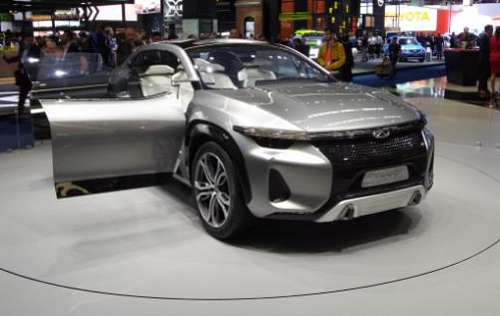
By Alix Paultre, contributing editor
There are many reasons for the birthing pains behind the development and deployment of the next generation of electric vehicles. In the marketplace, range anxiety is the primary criticism, but in reality, the issues go much deeper.
A car (or van or truck) isn’t just a means of conveyance for you and the people and things that you want to take with you. It is part of some people’s personal identity and the lens through which they choose to engage the world. Reinventing the car alters our relationship with it. Change the car, and you change society.
The tipping point is coming — in years, not decades.
We’ve seen this before. Many people were highly critical of HDTV deployment and early-generation flat-screen TVs. Complaints ranged from price points to real performance issues, such as phosphor burn-in on plasma sets, and many people believed that flat-screen high-resolution TV would remain a playground for rich folks and tech geeks. Then flat-screen TVs crossed a price-point threshold, and the market reached its tipping point.
For months after the tide changed, you could pick up nearly new, fully operational tube-based TV sets and refrigerator-sized rear-projection systems for free off the sidewalk. You could even take your time to pick one out because it wasn’t as if hordes of people were queueing up at the curb to grab them. Even refurbishers turned up their noses. Once a technology is obsolete, it dies fast.
Need another example? Once upon a time, there was an international industry that employed hundreds of thousands of people and generated billions of dollars in revenue, and then that industry transformed so fast and so completely that you might not figure it out before I name it: film-based images, videos, and processes. From magazine publishing to dental X-rays, film and its ancillary infrastructures were part of society as recently as a decade ago.
The electric car is already here, and the industries that support it are in a disruptive renaissance of creative development, shaping the future as they go along. Our staffers have put together a collection of reports that take a look at several important aspects of the electric car and the infrastructure inside and out.

The electric car is here, and its tipping point is coming — in years, not decades. Image credit: Alix Paultre.
The eye of the storm
The electric car is at the juncture of every major technology development effort in existence. Everything that we are developing today for mainstream society must factor in the automobile and its role in our lives. Back in the day, we had to adapt a horse-based infrastructure to fit a radical new technology. Now we face the same painful transition with the same sea change of disruptive development.
In addition to the traditional infrastructure issues like fueling, maintenance, reliability, and safety, we add the layer that the Information Age has both forced and empowered us to put into everything: intelligence. Exchanging data with personal devices inside the vehicle and with smart municipalities on the outside (and everything in between), a modern car must be a multilingual, poly-interface nexus of every advanced wireless and wired interface and the attendant communication protocols.
Every system has its story
Each aspect of a car — how it is guided, how it is powered, how that power is replenished, and the support infrastructure required — is changing. From hardware to software, the electric car of tomorrow will be very different from the fossil-fuel-based cars available today.
Exploring the world of vehicle automation, Lori O’Toole looks at future vehicle artificial intelligence and automation systems as they are a part of the new vehicle environment. One can’t operate a current vehicle without software, and future cars will be even more dependent upon it.
In the area of EV charging infrastructure, Jennifer Korszun examines the demands that the new technology will place on recharging stations and systems. As more EVs take to the road, the grid infrastructure and electric charging capacity to support them must be built out in kind or adoption and market penetration will fall short of expectations.
When it comes to vehicle interiors and the corresponding passenger operator ergonomic and infotainment requirements , just about everything is in flux. How do you design a car that doesn’t really need to have a dashboard? Nicole DiGiose looks at how new technologies will affect those systems.
Meanwhile, the work continues to address energy storage and alleviate range anxiety. Much of the focus is on batteries (check out what Toshiba is doing, for example). Maximilian Teodorescu crunches the numbers on wide-bandgap adoption and points out that advances in drivetrain technology can also increase range — and improve performance — by reducing power system size and weight.
Tipping points are always disruptive times, but proper planning and knowledge of industry core technologies and trends can bring order out of chaos and reduce the tension. Understanding the pressures in the storm can help you steer your way through it and create products that will be competitive in the new world created by it.
Advertisement
Learn more about Electronic Products Magazine





